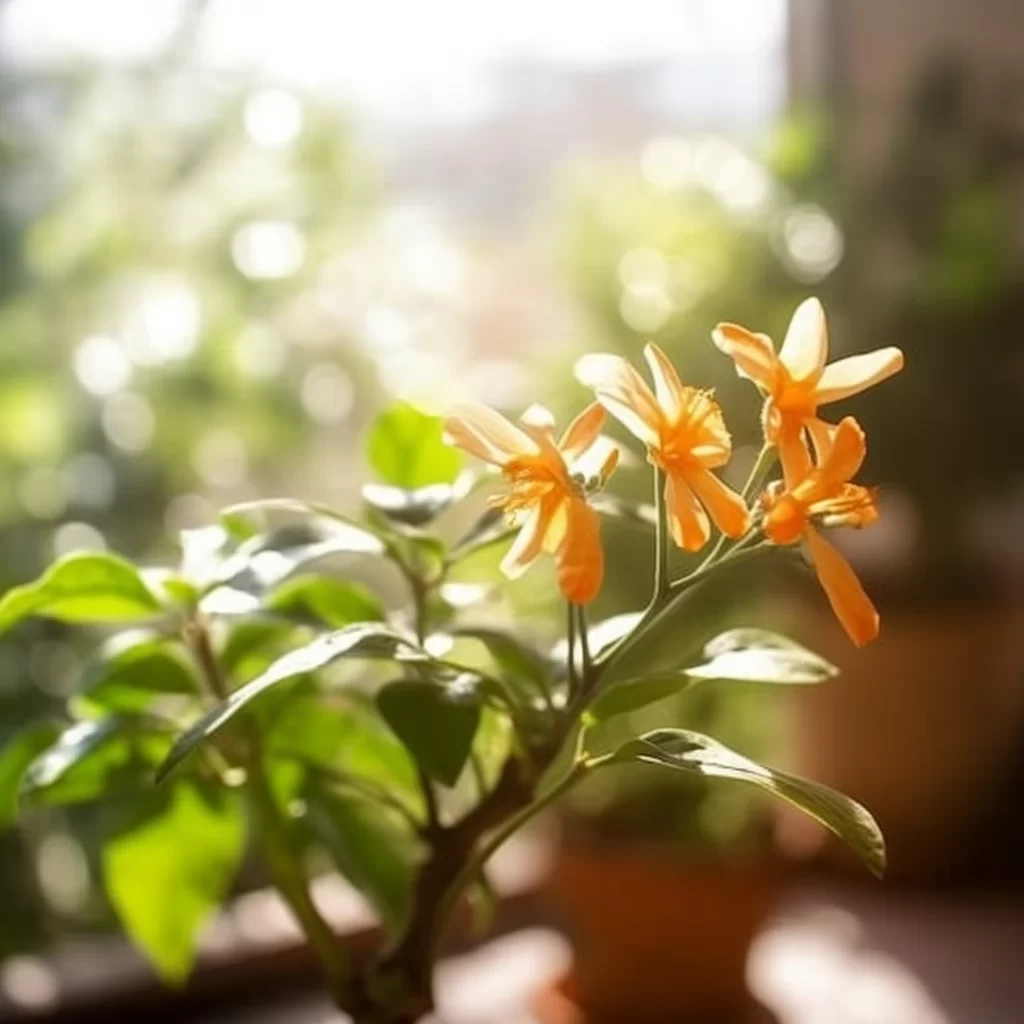Story of Day :
Contents
The Orange Jasmine Plant: A Complete Guide and Care Tips
Are you looking for a plant that adds vibrancy and fragrance to your garden? Look no further than the orange jasmine plant.
With its lush foliage, delicate flowers, and sweet scent, this tropical beauty is a standout addition to any outdoor space.
But how do you care for it? In this article, we’ll cover all the basics of orange jasmine plant care so that you can enjoy its beauty year-round.
What is an Orange Jasmine Plant?
The orange jasmine plant (Murraya paniculata) is a member of the citrus family.
It’s also known as mock orange or satinwood and is native to Southeast Asia, China, and India.
This evergreen shrub can grow up to 6 meters tall in tropical climates but typically stays much smaller in temperate regions.
Planting an Orange Jasmine Plant

If you live in USDA hardiness zones 9 through 11 (which includes Florida and parts of Texas), you can grow an orange jasmine outdoors year-round.
If not, consider growing it in a container so that you can move it indoors during colder months.
- Soil: The soil should be well-draining with plenty of organic matter mixed in.
- Sunlight: The plant prefers full sun but will tolerate partial shade if necessary.
- Water: Water deeply once or twice per week during dry spells but make sure not to over-water as this may damage the roots.
- Fertilizer: Apply fertilizer every few months during the growing season using a high-quality fertilizer with balanced nitrogen-phosphorus-potassium levels like 10-10-10 or 14-14-14.
- Spacing: Space orange jasmine plants two to three feet apart to allow room for growth.
Caring for an Orange Jasmine Plant
The good news is that the orange jasmine plant is relatively easy to care for once it’s established.
Here are some tips:
- Pruning: Prune your orange jasmine plant in late winter or early spring before new growth emerges.
Use pruning shears to remove any dead or damaged branches, and shape the plant as desired.
- Pests and diseases: The most common pests you’ll encounter with an orange jasmine are scale insects and mealybugs.
Treat infestations with insecticidal soap or horticultural oil sprays according to the instructions on the label.
Watch out for fungal diseases like powdery mildew, which can cause leaves to turn yellow or brown; treat with a fungicide if necessary.
- Mulch: Mulch around the base of your orange jasmine plant using bark chips or shredded leaves; this will help retain moisture in the soil and prevent weeds from growing.

Benefits of Growing an Orange Jasmine Plant
In addition to its beauty, there are many benefits of growing an orange jasmine plant:
- Aromatherapy: The sweet fragrance of the flowers can help reduce stress levels and promote relaxation.
- Insect repellent:The scent also acts as a natural insect repellent, keeping pesky mosquitoes at bay during outdoor activities like barbecues or picnics.
.
In Summary

An orange jasmine plant is a beautiful addition to any garden.
It’s relatively easy to care for, as long as you plant it in well-draining soil and give it plenty of water and sunlight.
Be sure to prune it annually, watch out for pests and diseases, and mulch around the base to retain moisture.
With these tips in mind, you’ll be enjoying the sweet scent of orange jasmine flowers all year round!